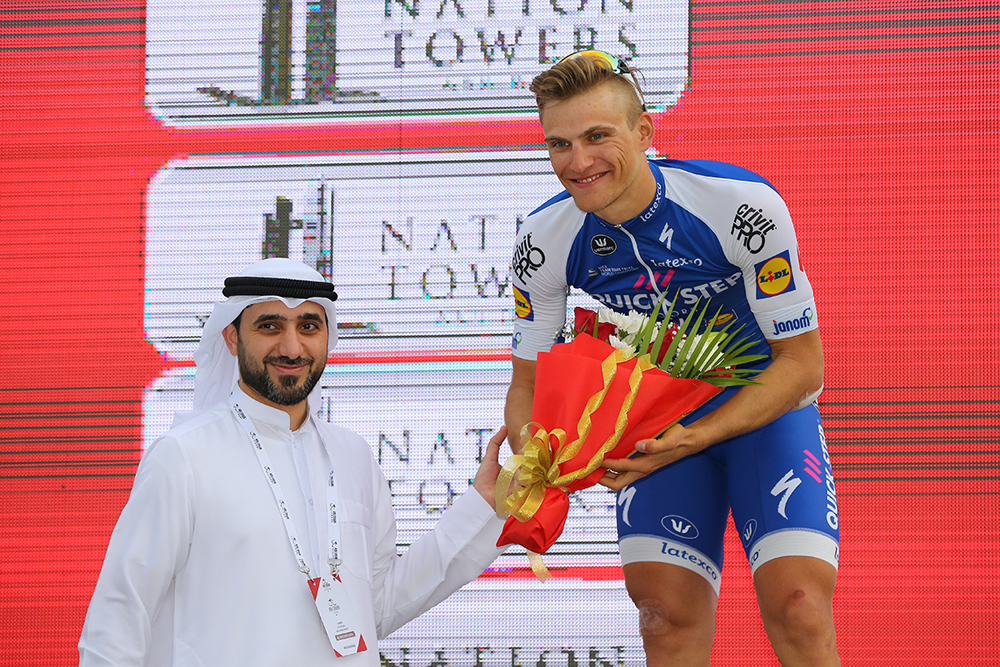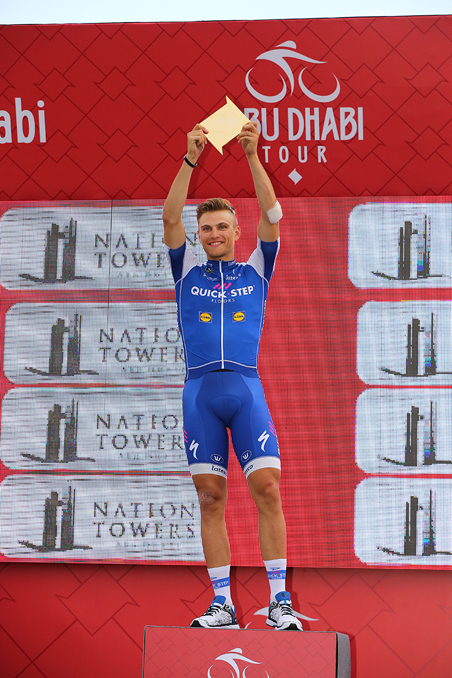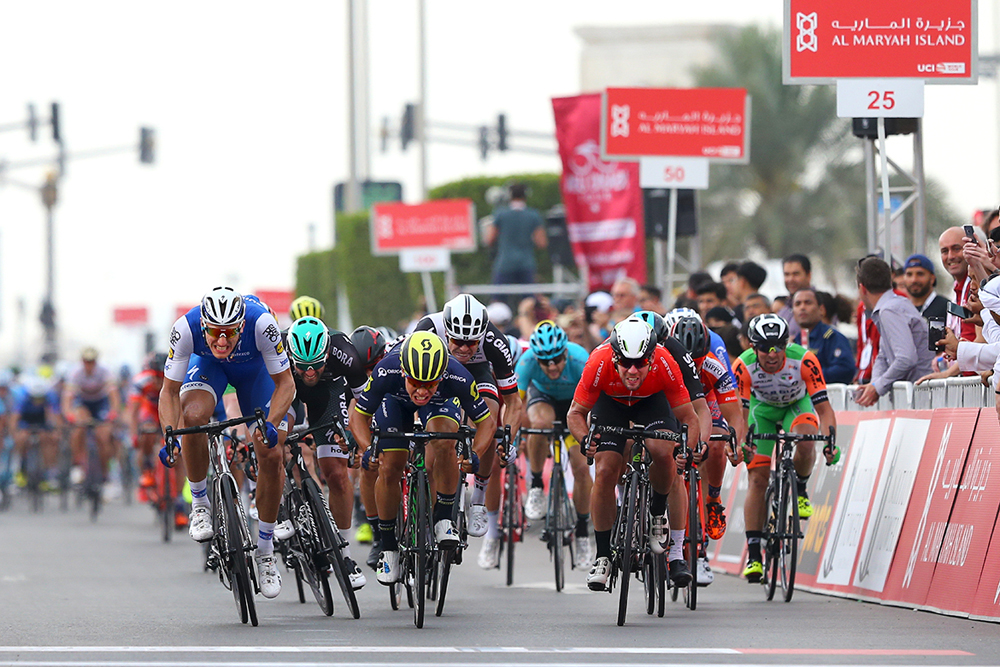Kittel mixes power and precision in Abu Dhabi Tour sprints
German puts disc brake argument to one side



Marcel Kittel (Quick-Step Floors) knows that ‘the finish is at the finish line’ and it served him well in the Abu Dhabi Tour, where he again proved to be as nimble as he is powerful and quick to win stage 2.
The 28-year-old was out of position but surfed through the bunch before he rolled Caleb Ewan and Mark Cavendish on the line to claim his fifth victory of the season.
“I can say that I’m very happy that I still believed through to the last moment in my chances. To come from the back today with a headwind maybe gave me an advantage, to sit and surf from wheel to wheel, save some energy and pick-up speed,” Kittel said.
The German sprinter was almost out of shot as the cameras focused in on petite sprinters Ewan and Cavendish, whose aerodynamic positions are well documented and aid their dexterity in the bunch.
Kittel is a tall and broad-shouldered power sprinter but is proving as apt in messy finales, where he is clearly not wholly reliant on a textbook lead-out to succeed. The nine-time Tour de France stage winner has shown in Abu Dhabi and at the Dubai Tour earlier this month that he can triumph from both.
“When I went into the right corner at 1.3km I was position 25, but I still had my last guys around me so I didn’t want to give up. I tried my best, tried to jump from wheel to wheel from there and I’m happy that I fought back and still believed in victory,” he said.
Kittel tipped from the onset of the race that bunch sprints could be messy due to the resources most teams have invested in marquee climbers here for Saturday’s hike to Jebel Hafeet.
Get The Leadout Newsletter
The latest race content, interviews, features, reviews and expert buying guides, direct to your inbox!
Chaotic sprints were a scenario last year at the Tour de France where Cavendish and his versatility dominated. The fact has not been lost on Kittel.
“It’s always difficult to find your position in a bunch sprint but that’s also the challenge. I guess that’s something we saw in the last years, on the Grand Tours and all the other races, is a development in that direction. You don’t really need that huge lead-out train anymore. It’s probably an advantage if you have a smaller group,” he said.